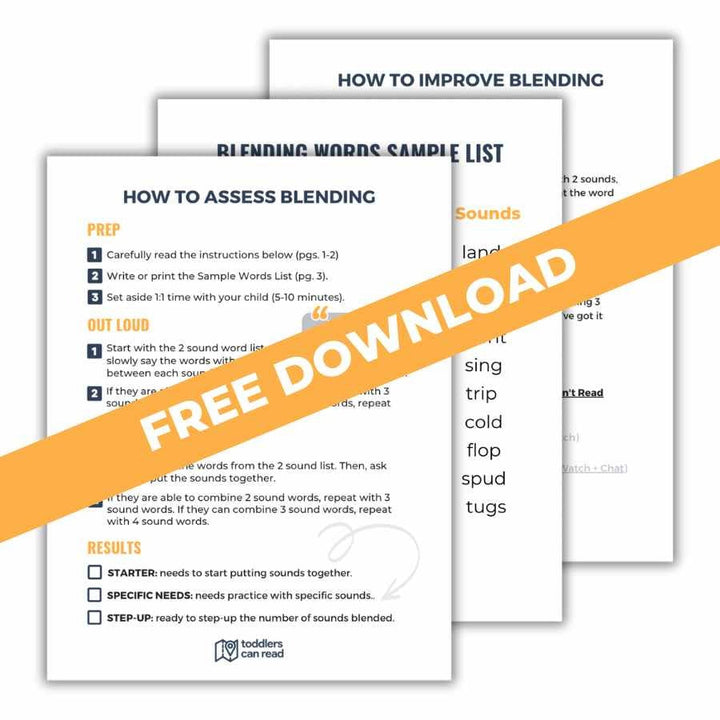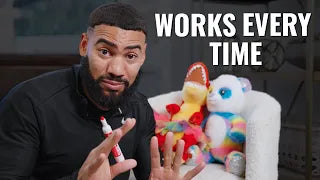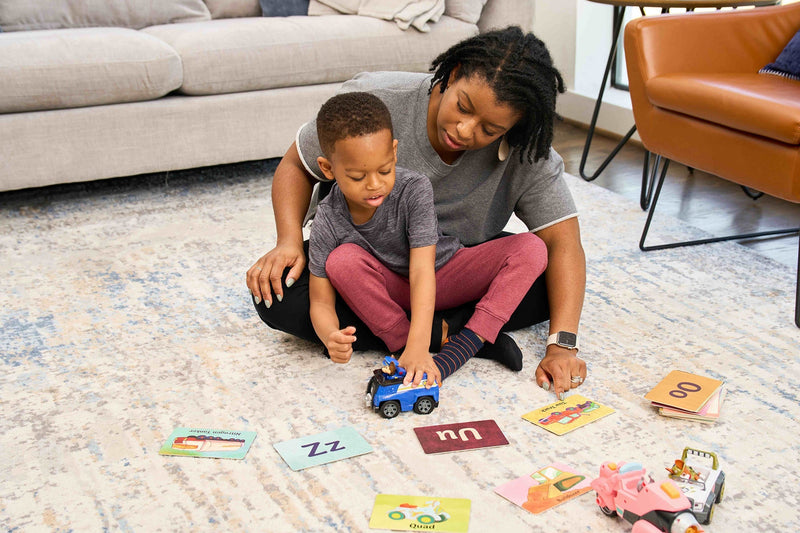Based on decades of research, we know the first step toward reading is learning letter-sound correspondence: phonics. And most kids learn their letter sounds pretty quickly.
But the next step, blending sounds into words, can be tough. There are consonant blends, vowel blends, overlapping blends, initial blends, final blends, and lots more.
All of that makes teaching kids to blend tricky—especially when you make these five mistakes.
5 Blending Mistakes to Avoid (And What You Should Do Instead)
#1 Relying on pictures to teach blending.Many people assume that matching a picture to a word will help their child remember the word better. But when you use a picture, it's tough to know if your little one is reading the word or simply guessing what the word is based on the picture.
So when you're teaching your little one to blend words, cover up any pictures or don't use pictures at all. Instead, use a whiteboard, notecards, or paper.
#2 Using sight words to teach blending.Emphasizing high-frequency words, or sight words, is a common way to teach reading. But the truth is, it doesn't teach kids to read. It teaches kids to memorize.
So instead of teaching words, teach sounds.
When your little one knows what sounds letters make (phonics) and knows how to put those sounds together, they'll be able to read words they've never even seen before!
#3 Assuming blending words will just happen.Many people believe early reading instruction is unnecessary because children learn how to read naturally.
But that's just not true. The Science of Reading has painted a very clear picture of how our brains learn to read, and it absolutely does not occur by chance.
Unfortunately, we can't necessarily rely on our school systems to teach our kids to read either. We're undoubtedly facing a literacy crisis in the United States, and the fact that two-thirds of fourth grade students are not considered proficient readers is evidence of that.
Instead of crossing your fingers and hoping your little one just happens to learn to blend, teach them and practice with them.
Your consistent, frequent, intentional, evidence-based strategies will serve your child for a lifetime.
#4 Underestimating how tricky blending is.Unless you had a lot of trouble learning how to read, you may not actually remember being taught. In fact, because you've practiced for decades, blending may feel easy to you.
It's helpful to remember that your child is navigating a significant challenge, so give them loads of grace and support.
Allow them to make mistakes and continue to learn this new, life-changing skill. They've got this. (And so do you!)
#5 Moving too quickly with blending words.When we think something is easy, we tend to teach it too quickly. We jump to what we think would be challenging, and we start the lessons at our pace.
Instead, meet your child where they are.
First, make sure they have their letters sounds down before trying blending. Then, use my free Blending Cheat Sheet to assess your little one's blending skills.

Once you know where to begin, use your little one's interests to keep them engaged. And continue to assess their blending skills as they progress so you can match their pace.
When you meet your little one where they are, you can decrease frustration and overwhelm. Remember: You and your child are a reading team. You can do this together, however long it takes.
You can teach your little one to blend words!
My online course, Blending Words, will help you teach your child to stop guessing at unfamiliar words, stop memorizing long lists of sight words, and start reading new words on their own. You don't have to be a professional teacher to support your child's reading journey. Let me show you how.









